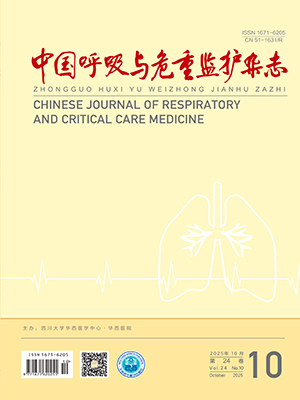| 1. |
Jaber S, Amraoui J, Lefrant JY, et al. Clinical practice and risk factors for immediate complications of endotracheal intubation in the intensive care unit: A prospective, multiple-center study. Critical Care Medicine, 2006 , 34 : 2355-2361.
|
| 2. |
Koh LK, Kong CE, Ip-Yam PC. The modified Cormack-Lehane score for the grading of direct laryngoscopy: evaluation in the Asian population. Anaesth Intensive Care, 2002, 30: 48 -51 .
|
| 3. |
Yildiz TS, Solak M, Toker K. The incidence and risk factors of difficult mask ventilation. J Anesth, 2005, 19: 7-11.
|
| 4. |
Langeron O, Masso E, Huraux C, et al. Prediction of difficult mask ventilation. Anesthesiology, 2000, 92 : 1229 -1236 .
|
| 5. |
Murphy M, WilliamsW. Manual of emergency airway management. IL: Lippincott, 2000 .
|
| 6. |
Reed MJ, Dunn MJG, McKeown DW. Can an airway assessment score predict difficulty at intubation in the emergency department?Emerg Med J, 2005, 22: 99-102.
|
| 7. |
Cobley M, Vaughan RS. Recognition and management of difficult airway problems. Br J Anaesth, 1992 , 68: 90-97.
|
| 8. |
Christie JM, Dethlefsen M, Cane RD. Unplanned endotracheal extubation in the intensive care unit. J Clini Anesth,1996,8:289-293.
|
| 9. |
Adnet F, Borron SW, Dumas JL, et al. Study of the “sniffing position” by magnetic resonance imaging. Anesthesiology, 2001 ,94: 83-86 .
|
| 10. |
Adnet F, Baillard C, Borron SW, et al. Randomized study comparing the “sniffing position“with simple head extension for laryngoscopic view in elective surgery patients. Anesthesiology,2001, 95: 836-841.
|
| 11. |
Mort TC. Preoxygenation in critically ill patients requiring emergency tracheal intubation. Criti Care Med, 2005, 33: 2672-2675.
|
| 12. |
Baillard C, Fosse JP, Sebbane M, et al. Noninvasive ventilation improves preoxygenation before intubation of hypoxic patients. AmJ Respir Criti Care Med, 2006 , 174: 171-177 .
|
| 13. |
Lippmann M, Kakazu C. Hemodynamics with propofol: Is propofol dangerous in classes III-V patients? Anesth Analg, 2006, 103 : 260.
|
| 14. |
Zed PJ, Abu-Laban RB, Harrison DW. Intubating conditions and hemodynamic effects of etomidate for rapid sequence intubation in the emergency department: An observational cohort study. Acad Emerg Med, 2006, 13: 378-383 .
|
| 15. |
Mokhlesi B. Corticosteroids for patients with septic shock. JAMA,2003, 289: 43, author reply 43 -44.
|
| 16. |
Bloomfield R, Noble DW. Etomidate and fatal outcome - even a single bolus dose may be detrimental for some patients. Br J of Anaesth, 2006, 97: 116 -117.
|
| 17. |
Martin E, Ramsay G, Mantz J, et al. The role of the alpha2 -adrenoceptor agonist dexmedetomidine in postsurgical sedation in the intensive care unit. J Intensive Care Med, 2003 , 18 : 29-41.
|
| 18. |
Hsu YW, Cortinez LI, Robertson KM, et al. Dexmedetomidine pharmacodynamics: part I: crossover comparison of the respiratory effects of dexmedetomidine and remifentanil in healthy volunteers.Anesthesiology, 2004, 101 : 1066-1076.
|
| 19. |
Avitsian R, Lin J, Lotto M, et al. Dexmedetomidine and awake fiberoptic intubation for possible cervical spine myelopathy -a clinical series. J Neurosurg Anesthesiol, 2005, 17: 97 -99 .
|
| 20. |
Leykin Y, Pellis T, Lucca M, et al. Intubation conditions following rocuronium: influence of induction agent and priming. Anaesth Intensive Care, 2005, 33 : 462-468.
|
| 21. |
Ledowski T, Wulf H. The influence of fentanyl vs. s-ketamine on intubating conditions during induction of anaesthesia with etomidateand rocuronium. Eur J Anaesthesiol, 2001, 18 : 519-523.
|
| 22. |
Hughes M, Grant IS, Biccard B, et al. Suxamethonium and critical illness polyneuropathy. Anaesth Intensive Care, 1999, 27: 636-638 .
|
| 23. |
Sluga M, Ummenhofer W, Studer W, et al. Rocuronium versus succinylcholine for rapid sequence induction of anesthesia and endotracheal intubation: a prospective, randomized trial in emergent cases. Anesth Analg, 2005, 101: 1356-1361.
|
| 24. |
Mencke T, Knoll H, Schreiber JU, et al. Rocuronium is not associated with more vocal cord injuries than succinylcholine after rapid-sequence induction: a randomized, prospective, controlled trial. Anesth Analg, 2006 , 102: 943-949.
|
| 25. |
Divatia JV, Kulkarni AP, Sindhkar S, et al. Failed intubation in the intensive care unit managed with laryngeal mask airway and percutaneous tracheostomy. Anaesth Intensive Care,1999,27:409-411.
|
| 26. |
Ferson DZ, Rosenblatt WH, Johansen MJ, et al. Use of the Intubating LMA-Fastrach in 254 patients with difficult-to-manage airways. Anesthesiology, 2001, 95: 1175-1181.
|
| 27. |
Frappier J, Guenoun T, Journois D, et al. Airway management using the intubating laryngeal mask airway for the morbidly obese patient.Anesth Analg, 2003, 96: 1510-1515.
|
| 28. |
Goldman AJ, Rosenblatt WH. Use of the fibreoptic intubating LMACTrach ( TM) in two patients with difficult airways. Anaesthesia,2006, 61: 601-603 .
|
| 29. |
Noguchi T, Koga K, Shiga Y, et al. The gum elastic bougie eases tracheal intubation while applying cricoid pressure compared to a stylet. Can J Anesth, 2003, 50: 712-717 .
|
| 30. |
Yardy N, Hancox D, Strang T. A comparison of two airway aids for emergency use by unskilled personnel: The Combitube and laryngeal mask. Anaesthesia, 1999 , 54: 181-183.
|
| 31. |
Ault MJ, Ault B, Ng PK. Percutaneous dilatational tracheostomy for emergent airway access. J Intensive Care Med, 2003, 18: 222-226.
|
| 32. |
Polderman KH, Spijkstra JJ, de Bree R, et al. Percutaneous dilatational tracheostomy in the ICU: optimal organization, low complication rates, and description of a new complication. Chest,2003, 123: 1595-1602.
|
| 33. |
俞森洋. 有创机械通气患者人工气道的选择: 经鼻还是经口插管.是否要早做气管切开. 中国呼吸与危重监护杂志, 2009,8:3-5.
|




